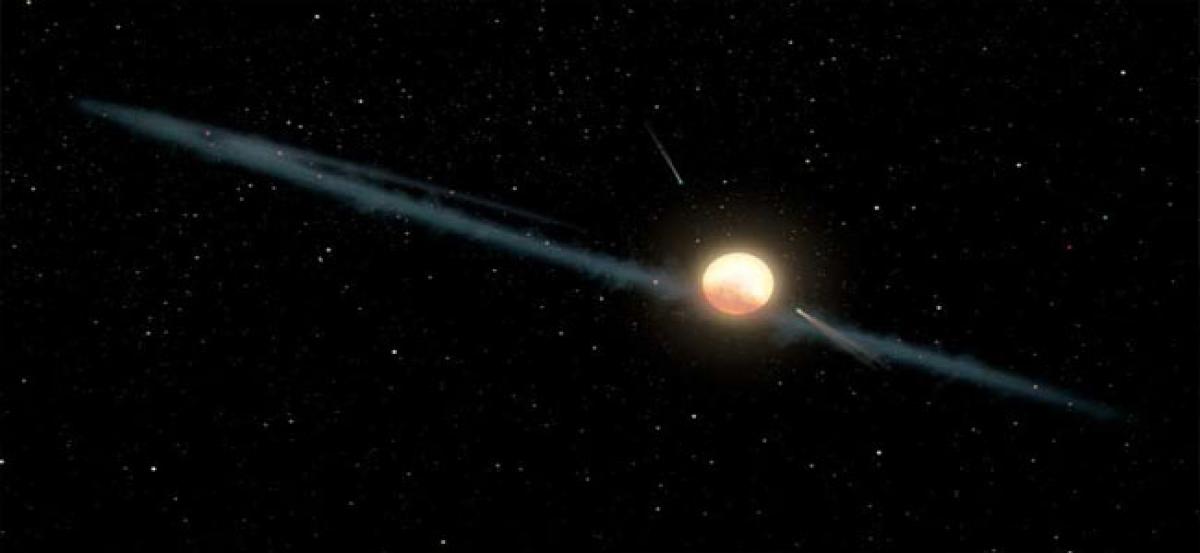Live
- Ashutosh Gowariker to lead International Jury at IFFI 2024
- The global challenges of greener aviation
- Shreyas Media secures exclusive advertising rights for ‘MahaKumbh Mela 2025’
- Experience the journey of art
- Seven iconic ghats undergo makeover for Mahakumbh
- Smog engulfs capital with ‘severe’ air quality
- Slur against HDK wrong, Zameer will be corrected: K’taka Cong
- Himalayan Echoes Literature Festival returns to Nainital with a focus on art, environment, and culture
- Taking Off: Solo travelling as a minor
- MVA will win over 160 seats, form govt in Maha: Shivakumar
Just In

The Tabby\'s star - the most mysterious star in the universe - dims and brightens in an unusual manner due dust particles, say scientists who have debunked the theory that the cosmic body is being orbited by an alien megastructure.
Washington: The Tabby's star - the most mysterious star in the universe - dims and brightens in an unusual manner due dust particles, say scientists who have debunked the theory that the cosmic body is being orbited by an alien megastructure.
KIC 8462852, or "Tabby's Star," is about 50 per cent bigger and 1,000 degrees hotter than the Sun. It is more than 1,000 light years away. However, it has been inexplicably dimming and brightening sporadically like no other. Several theories abound to explain the star's unusual light patterns including an alien megastructure orbiting the star. "Dust is most likely the reason why the star's light appears to dim and brighten.
The new data shows that different colours of light are being blocked at different intensities," said Tabetha Boyajian, professor at the Louisiana State University in the US. "Therefore, whatever is passing between us and the star is not opaque, as would be expected from a planet or alien megastructure," said Boyajian.
The mystery of Tabby's Star is so compelling that more than 1,700 people donated over USD 100,000 through a crowdfunding campaign in support of dedicated ground-based telescope time to observe and gather more data on the star through a network of telescopes around the world. Scientists closely observed the star through the Las Cumbres Observatory from March 2016 to December 2017. Beginning in May 2017 there were four distinct episodes when the star's light dipped.
Supporters from the crowdfunding campaign nominated and voted to name these episodes. The first two dips were named Elsie and Celeste. The last two were named after ancient lost cities - Scotland's Scara Brae and Cambodia's Angkor. In many ways what is happening with the star is like these lost cities, researchers wrote in the study published The Astrophysical Journal Letters. "They're ancient; we are watching things that happened more than 1,000 years ago.
They're almost certainly caused by something ordinary, at least on a cosmic scale," researchers said. Citizen scientists, the Planet Hunters, sifting through massive amounts of data from the NASA Kepler mission were the ones to detect the star's unusual behaviour in the first place.

© 2024 Hyderabad Media House Limited/The Hans India. All rights reserved. Powered by hocalwire.com







